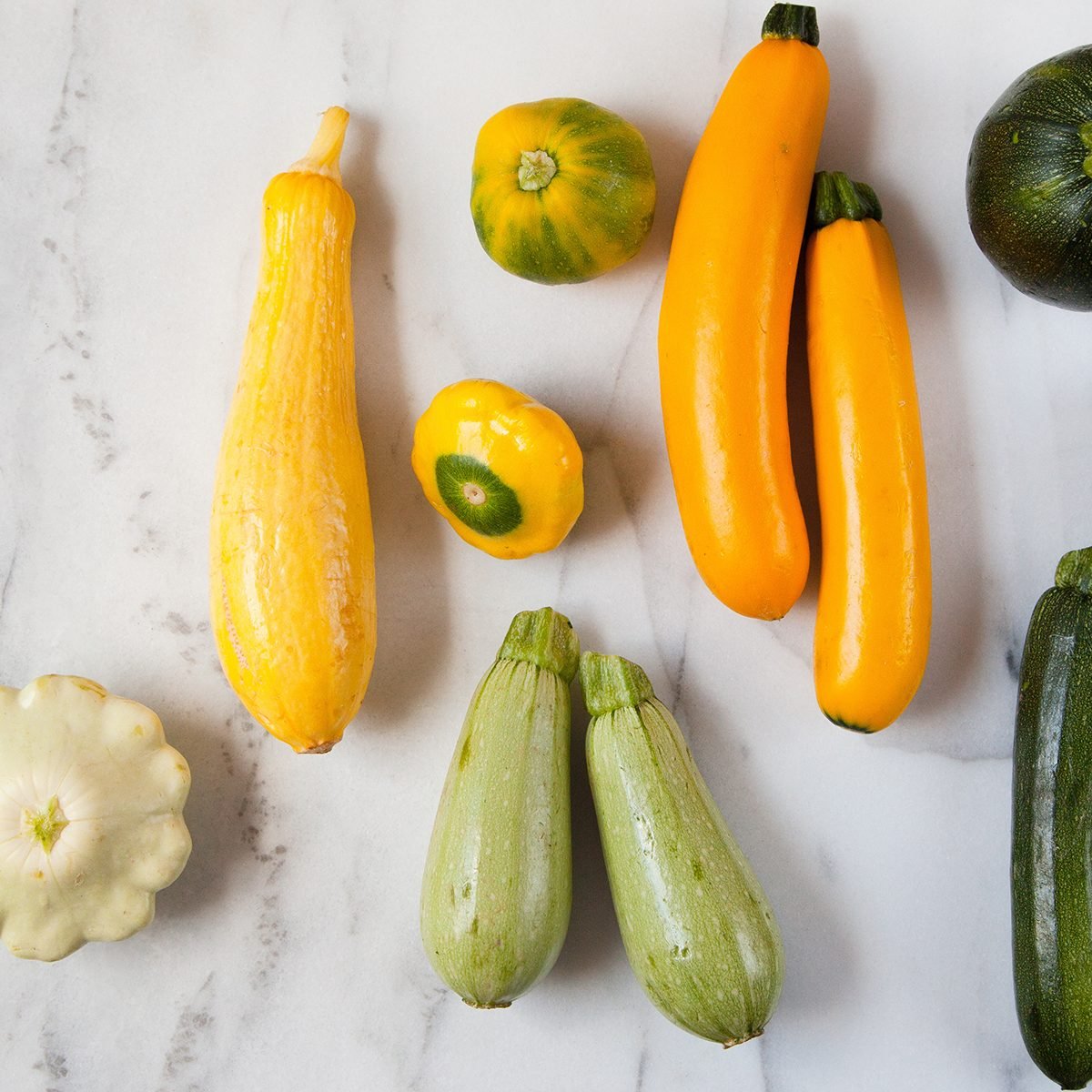
Selecting Summer Squash
Most summer squashes have tender, glossy skins, although a few varieties do have a firmer texture. If you’re harvesting your own, pierce the skin with your thumbnail to see if the squash is ready. (Skip this step at the market, though. It’s just one of those things every farmer wishes you knew!)

What Size Should You Choose?
Summer squashes come in all shapes and sizes. Baby squash is super tender, with tiny seeds and nutrient-dense flesh. Because of their small size, these squash are perfect for cooking whole. Larger squash tends to lose its flavor and become watery. While their large seeds are still edible, you may want to discard them because of their tough texture. These squash are best suited for baked goods or soups.
There are hundreds of ways to cook summer squash. Here are our 99 favorite recipes!
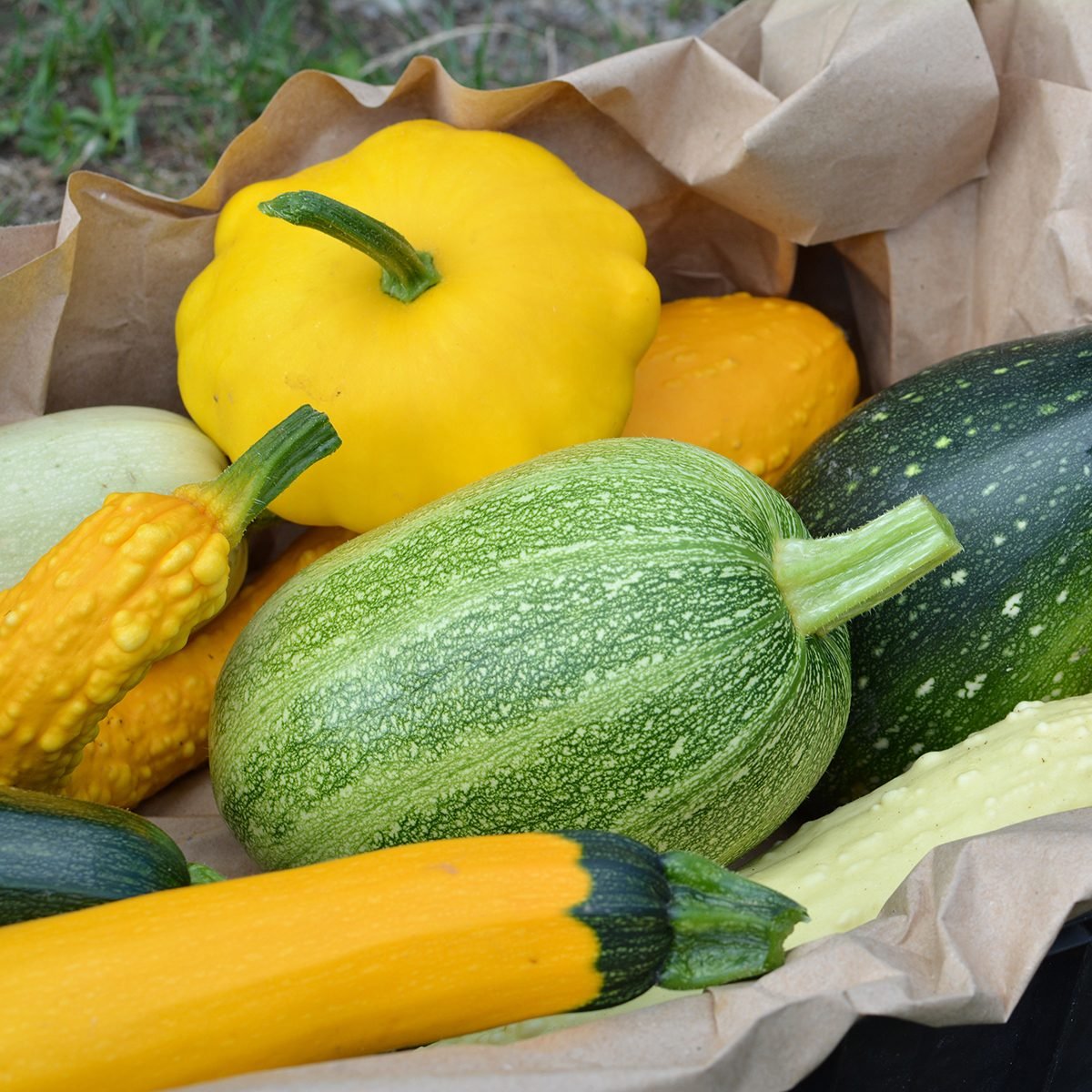
Storing Summer Squash
When you get back from market, pop the squash in the crisper drawer of your refrigerator and plan to use it within a week. They’ll last longer if you place them in a plastic bag with a corner open to promote air circulation and humidity. You can also freeze grated squash in freezer-safe bags for about 12 months.
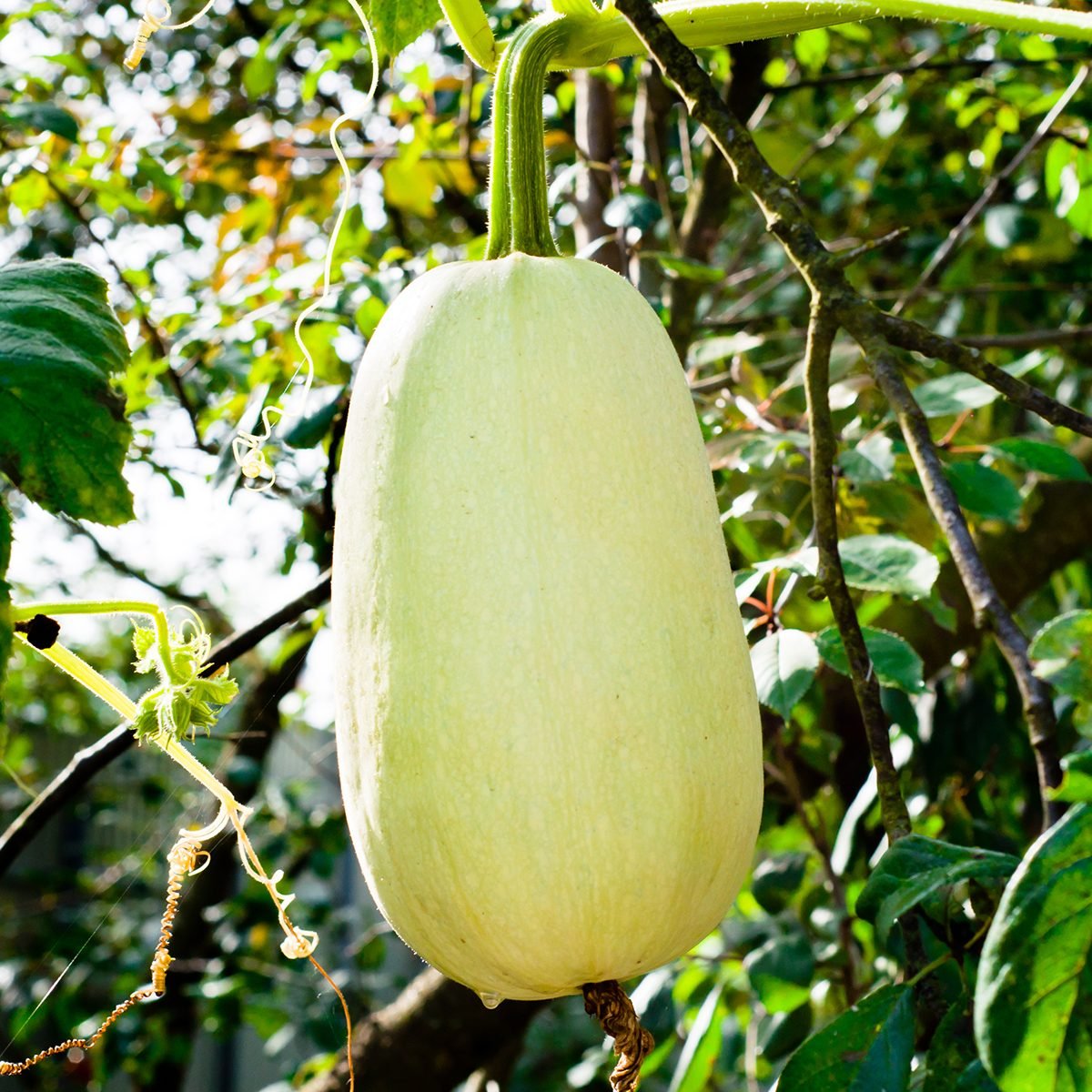
Cousa
It’s easy to confuse cousa with spaghetti squash—they look nearly identical, although cousa’s flesh and seeds are edible. This Middle Eastern variety has very thin skin and it’s a touch sweeter than a zucchini. Because of their oval shape, these summer squashes are perfect for making garden-stuffed squash boats.
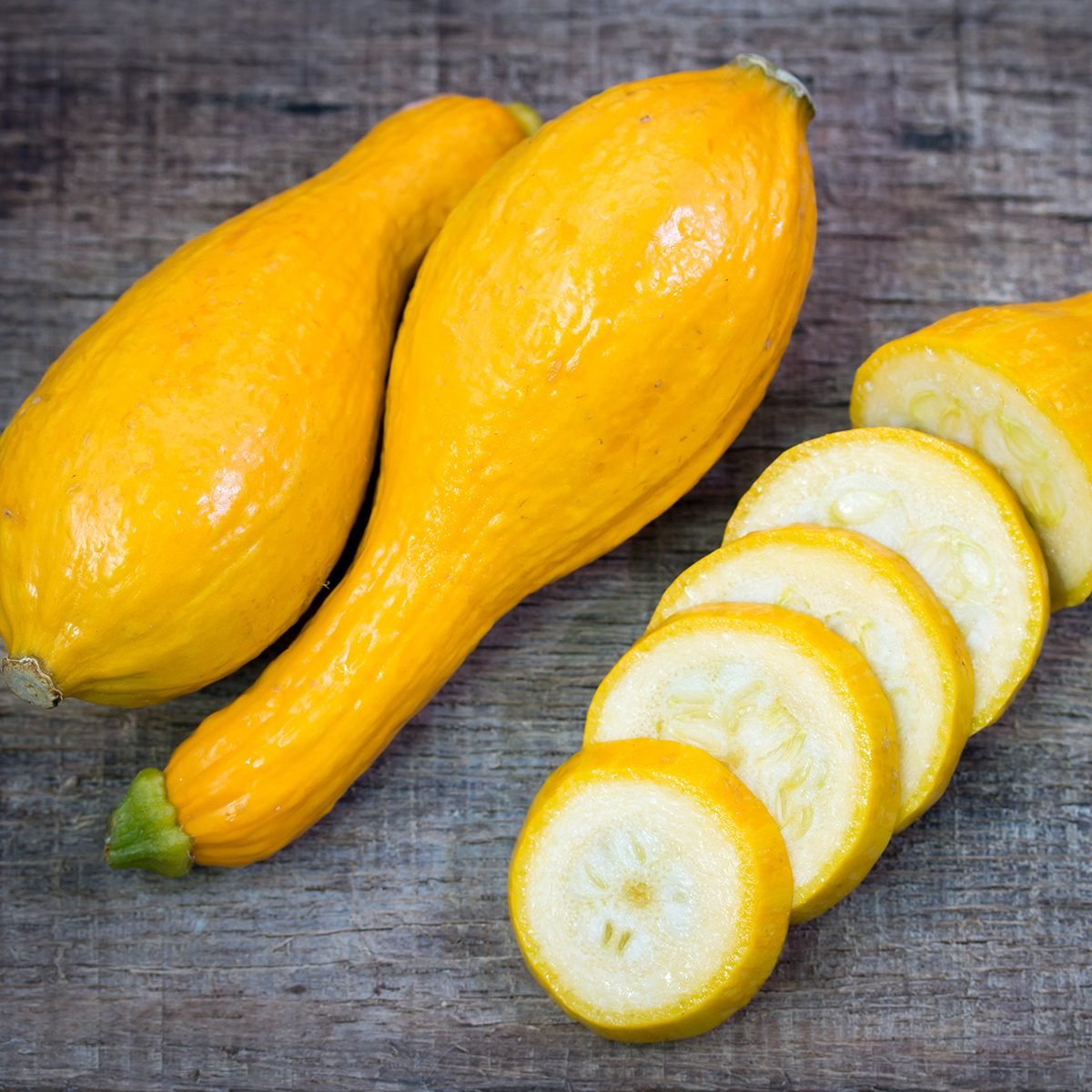
Crookneck
Crookneck squash are usually bright yellow and have the best texture when they’re shorter than 6 inches long. Their bulbous bottoms and long, slender necks make them difficult to cut into perfect rounds, so we like dicing them instead. Flavorwise, they’re pretty similar to zucchini and mixing them with green squashes is a perfect way to create a colorful medley.

Pattypan
This UFO-shaped vegetable might be the cutest variety of summer squash! They come in all colors and sizes, although we like the baby sizes for grilling whole. Pattypan squash larger than a few inches wide have tougher skin, but it’s still edible. They’re best quartered, chopped or sliced for grilling, roasting or sauteeing.
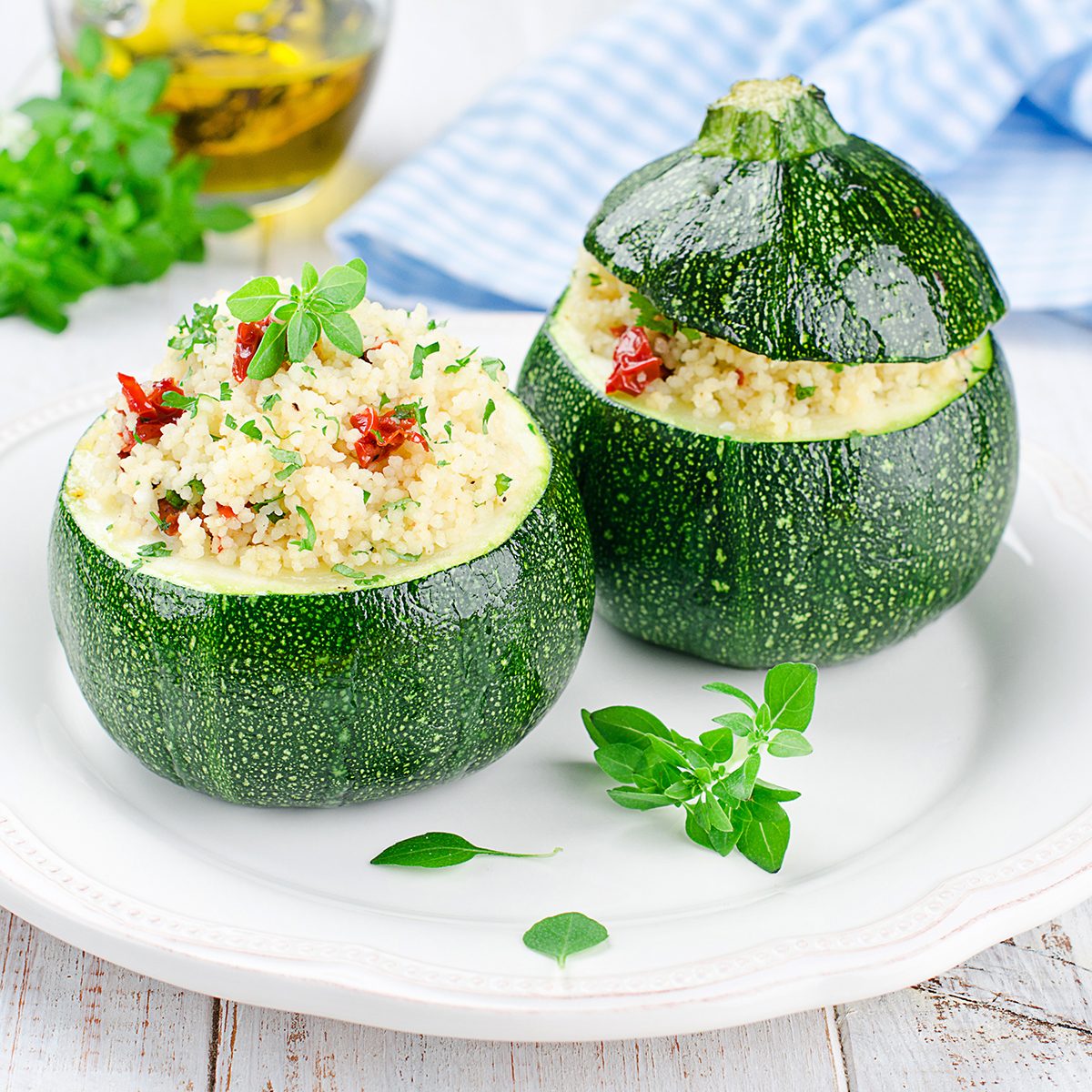
Round Zucchini
These grapefruit-shaped summer squash taste exactly like regular zucchini, but their shape makes them more fun. Use them instead of peppers to create cheesy stuffed squashes. You can also remove the top, spoon out the insides and use them as a serving bowl for soup. Look for softball-size squash for the most tender eating experience.

Tatuma
This Mexican heirloom squash (also called calabacita) is firmer than other types of summer squash, but they’re sweeter and more flavorful. They’re usually shaped like paler green zucchinis, although sometimes they’re spherical. Use them in any of your favorite zucchini recipes to give the dish a flavor boost.
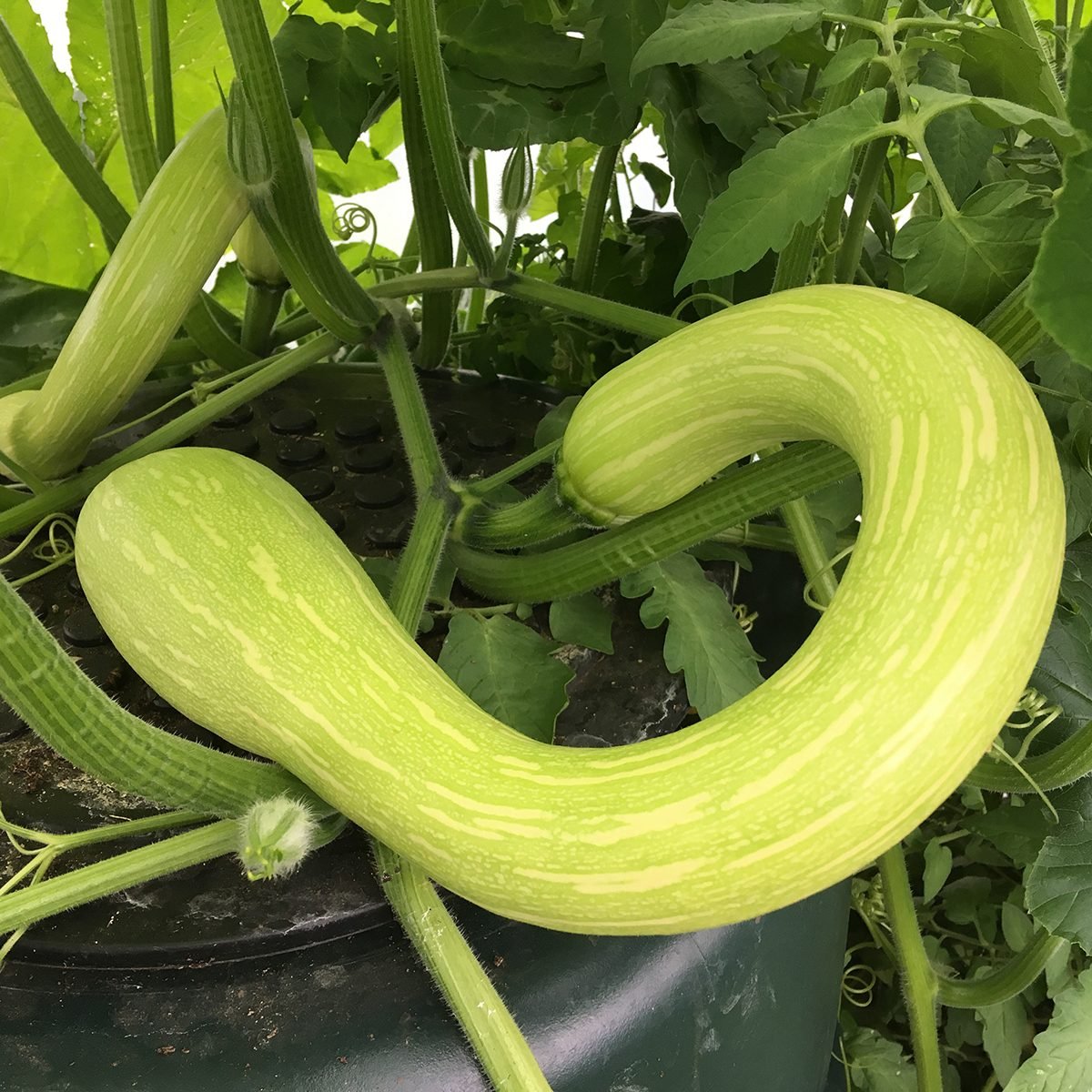
Tromboncino
This Italian heirloom variety got its name because of its unique shape. They can grow to a massive size, but we like them best when they’re about a foot in length. You’ll notice they have fewer seeds inside and a firmer texture, and they taste fantastic when chopped up and sauteed for a quick summer squash side dish.

Zephyr
These two-tone squash are yellow on top and pale green on the bottom. Their straight-neck shape makes them perfect for slicing into rounds or turning into zucchini noodles. While their skin is slightly tougher than a zucchini, they’re soft and tender inside with a pleasant, nutty flavor.

Zucchini
Zucchini is the poster child when it comes to summer squash. Small, 4- to 6-inch zucchini taste fantastic raw when shaved into ribbons for zucchini carpaccio. You can halve larger squash for the grill, saute chopped-up zucchini or grate them for making quick breads. They even make great pickles!
The post 8 Types of Summer Squash (and How to Cook Each One) appeared first on Taste of Home.
Lindsay D. Mattison